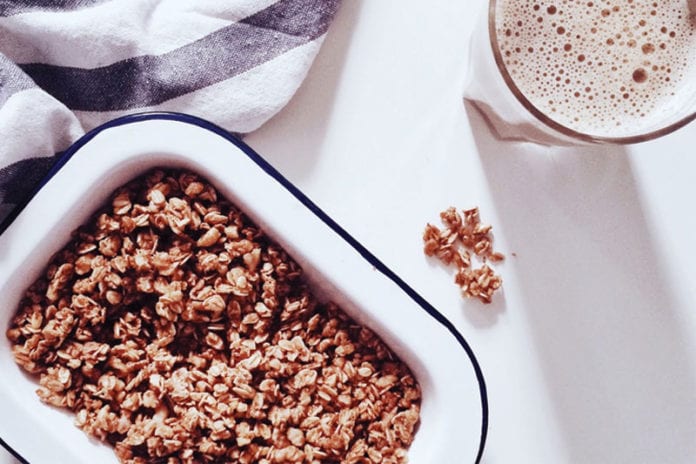The American diet includes very little fiber. In fact, it is reported that most Americans eat about 10-12 grams of fiber, less than half of the recommended fiber intake. I challenge you to look at the nutritional content of the food you currently eat – there is not much fiber. The processing of food and food products remove the fiber from those foods. We all know fiber is good for your digestion and “keeps you regular”, but did you know fiber is good for your heart. It is actually bulk, and fills you up. It keeps you filled up, so you eat fewer calories when you increase your fiber intake. It is recommended that women eat at least 25 grams of fiber per day. Men should eat at least 35 grams of fiber per day.
You can turn to fiber supplements, but I also recommend trying to get fiber from your diet, first. So, what has fiber?
Apples :
A whole medium apple with the skin has almost 3.5 grams of fiber, but if you peel the skin, the fiber content drops to 1.7 grams. Apple juice is even lower, with a negligible 0.2 gram.
Artichokes :
A medium artichoke contains 10 grams of fiber but just 120 calories
Bran :
One simple way to increase fiber intake is to power up on bran. Bran from many grains is very rich in dietary fiber. Oat bran is high in soluble fiber, which has been shown to lower blood cholesterol levels. Wheat, corn, and rice bran are high in insoluble fiber, which helps prevent constipation. Bran can be sprinkled into your favorite foods—from hot cereal and pancakes to muffins and cookies. Many popular high-fiber cereals and bars are also packed with bran.
Beans :
These nutritional powerhouses can pack as much as 7 grams of fiber in just one-half cup; much of that is in the skin. Beans are also great sources of protein and iron. Other legumes (types of pod vegetables in the pea and bean family) include chickpeas, edamame, lentils, and soy nuts. And there are all sorts of ways to serve them, such as bean burritos, lentil soup, bean dip, and vegetarian chili.
Green Leafy Vegetables :
Green leafy vegetables are a great source of iron, beta-carotene and fiber. According to Today’s Dietitian, the best green vegetables for fiber include swiss chard, spinach, turnip greens, collard greens and beet greens. Just 1 cup of cooked green contains 4 to 5 g of fiber.
Nuts :
Nuts are not only high in protein, but fiber as well. Pine nuts, in particular, contain the highest amount of fiber, with 6 g per 1/2 cup serving. Other high fiber nut choices include almonds, pistachio nuts and walnuts. Simply watch your servings – 1/4 cup is a good portion for nuts.
Slowly adding more fiber to your diet can avoid bloating and gas by giving your body time to adapt. It is also important to drink plenty of water while increasing fiber.
Try these tips for adding more low-calorie foods to your meal plan to boost fiber while keeping calories in check:
- Eat whole fruits instead of fruit juice.
- Snack on veggies.
- Make vegetables a main course.
- Add a filling vegetable salad instead of a starchy salad as a side dish with meals.
- Enjoy a bowl of vegetable-based broth soup before meals.
- Start the day with a high-fiber cereal topped with fruit and low-fat dairy.
- Eat more beans.
- Make all your grains whole and limit them to a few servings each day.
- Add nuts and seeds to your weight loss plan, but keep the portions small because they are high in fiber and calories.
Experts are quick to point out that fiber alone won’t peel off the pounds. You still need to eat a healthy, calorie-controlled diet and get regular physical activity. But controlling or maintaining your weight is easier with a diet rich in fiber.
So, what are you waiting for… Go eat some fiber!
What do you think? Share your thoughts in the comments section below.
This article was republished with permission from The NP Mom.

